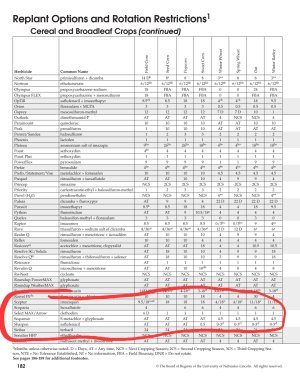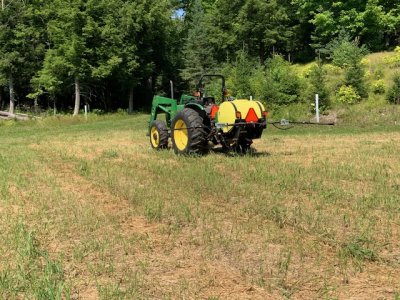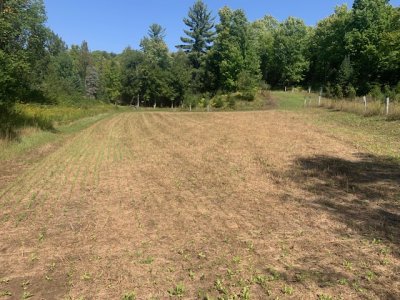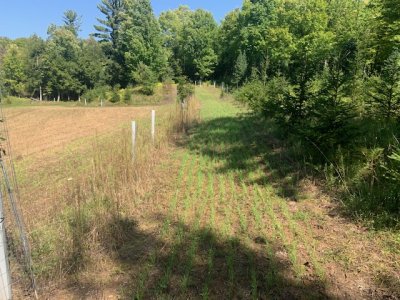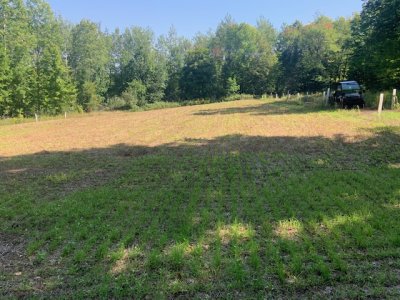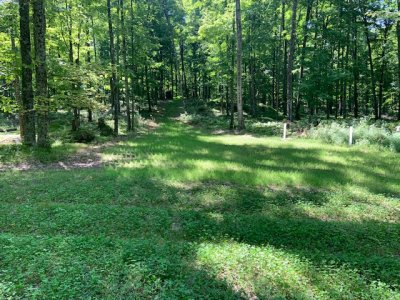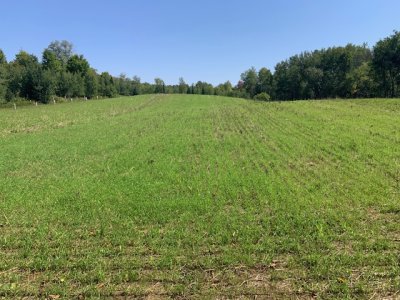That was always my understanding as well Farmer Dan....until just recently. I guess it depends upon who/what you believe as to whether or not Clethodim has residual effects in the soil. As of this past week or two, I have now moved into the...."It definitely does have residual effects in the soil" group. Here is why:
This year I decided to terminate 3 small switchgrass plots and convert them back into food plots. I mowed them twice this summer (as a bonus - I used some of the thatch to mulch around some oak and crabapple seedlings and it worked great). On August 8th I sprayed the plots with Glyphosate in preparation for drilling my fall cover crop mix into these plots. A guy on the Michigan Sportsman Forum suggested that the Gly alone may not work as well as I might want it to and he suggested that I also spray the switchgrass with Clethodim just to make sure.... On August 12th, I sprayed all 3 plots with Clethodim/Crop Oil (16 oz & 1 Qt/acre).
View attachment 56858
View attachment 56859
On August 13th - the day after spraying the Clethodim, I drilled my fall cover crop which included mostly legumes and a heavy dose of cereal rye (100#/acre). We got some timely rains and my wife and I went on vacation out west to see some National Parks. You can imagine my dismay when we returned on September 4th to see this. I had almost zero germination of the rye seed.
View attachment 56860
This strip, adjacent to the switchgrass plot was drilled with the same mix on the same day and everything came up fine...
View attachment 56861
The near section of this plot had no switchgrass in it so I didn't spray it with Clethodim but I did spray the rest of the plot. That portion that had not been sprayed with Cleth germinated just fine...but I had zero gemination of rye in the portion of the plot which had been sprayed with Clethodim.
View attachment 56862
The other seeds in the mix all germinated just fine (peas, radish, vetch, clovers....but the rye never germinated. The only explanation I have for this phenomena is that the Clethodim did, in fact, have some residual effect in the soil.
View attachment 56863
Other plots where I drilled the same seed mix at the same depth a week or so later have all come up just fine. The only place where the rye failed to germinate was in those switchgrass plots where I had sprayed Clethodim the day before planting.
View attachment 56865
View attachment 56866
View attachment 56867
View attachment 56868
Here is what an article from the NDA had to say:
"Residual soil activity varies widely based on the herbicide, use rate, soil, and precipitation. Some herbicides have short residual activity, whereas others may remain active for many months. For example, clethodim is a grass-selective herbicide that
remains active in the soil for approximately seven days."
Plant-Back Intervals Prevent Herbicide Trouble in Food PlotsNational Deer Associationhttps://deerassociation.com › plant-back-intervals
I hope the residual effect really does only last 7 days as I broadcasted 200# more of cereal rye in those plots yesterday (Sept 5th). Hopefully I will see it come up soon.
